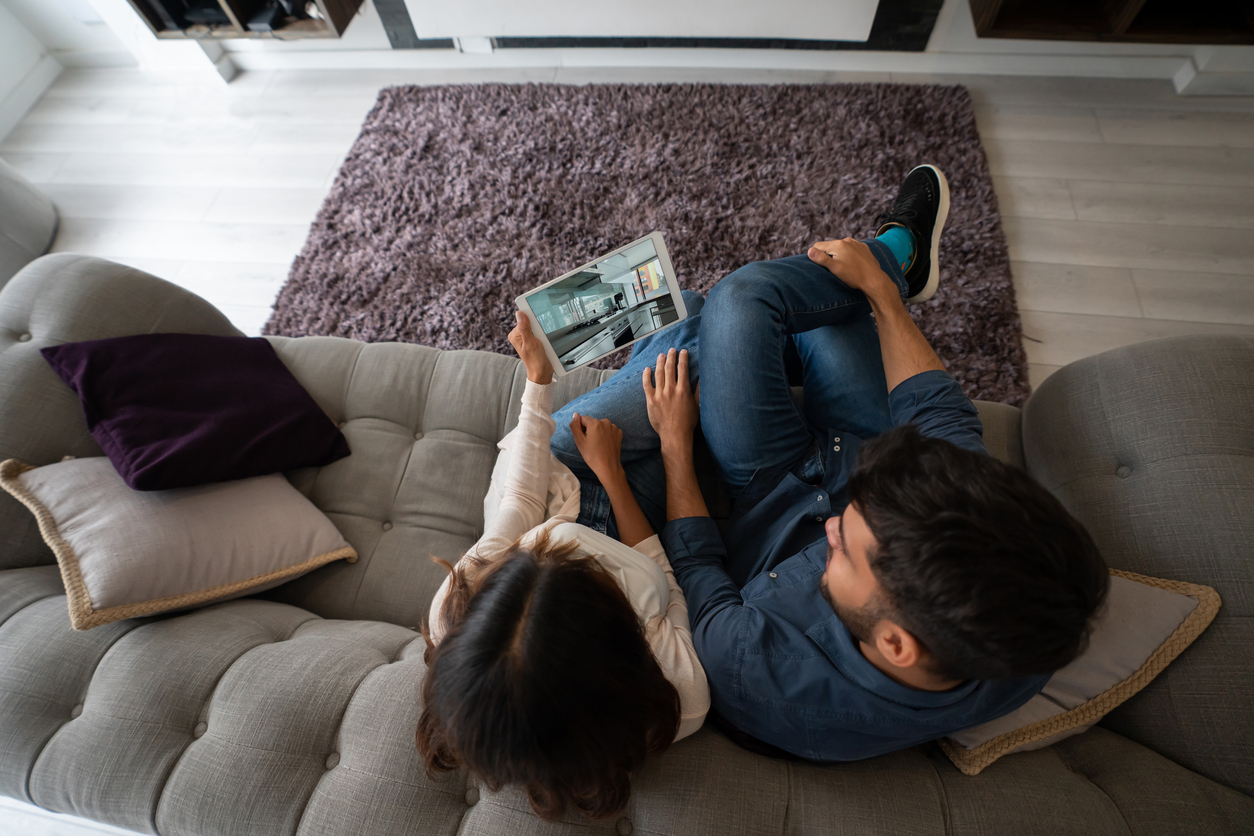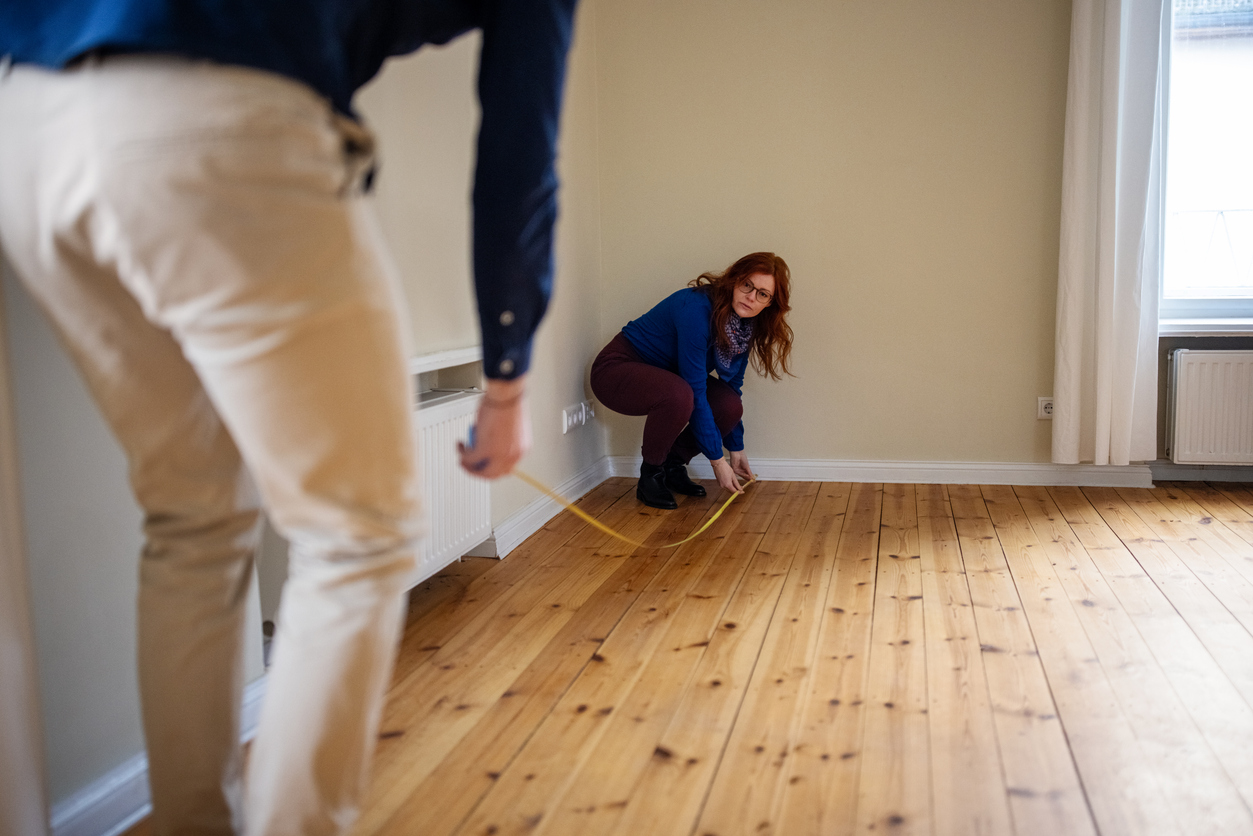We may earn revenue from the products available on this page and participate in affiliate programs. Learn More ›
Parents and advice go hand in hand, and parents often have relevant experience that can help guide you through big life decisions—such as buying your first house. Unfortunately, buying a home today is a much different experience than it was 50 years ago. If your parents haven’t purchased a house since the 1970s or 1980s, they may be a bit out of touch.
Some in older generations have pointed fingers at irresponsible spending habits as the reason home buying is put off, but buying avocado toast or a morning latte is hardly going to make a difference in whether you can purchase a home. Let’s take a look at 12 factors of home buying that have changed and how they can create an obstacle for homeownership.
1. Search Options

Technology has changed the game when it comes to finding viable real estate options. Decades ago, people looking for a home had to engage a real estate agent and scour print listings in the newspaper or real estate magazines.
These days, in addition to engaging the services of a real estate agent or reviewing print ads, there are multiple real estate websites and apps that are updated on a nearly instant basis. Not only do these listings come with multiple high-quality photos, but they go further with video and virtual tours as well. You can search online for specific amenities then filter by options like price, square footage, and location to qualify or eliminate properties that fit your goals.
2. Mortgage Rates

Unless you’re able to complete a real estate deal in cash, your lender will issue a mortgage rate—the amount they charge for lending you the money to buy your home. These rates can change in a blink, and they’re on the rise. According to Bankrate, the benchmark fixed rate on 30-year mortgages was nearing 7 percent in October 2022. In the 1970s and 1980s, the U.S. was pushed into a recession, and in this time period, interest rates for 30-year mortgages started at over 7 percent and climbed steadily to an annual average of 16.63 percent in 1981.
3. Showings

There used to be only two ways to see a home before you made an offer: You booked an appointment with a real estate agent to give you a tour, or you attended an open house. In modern times, you can do a virtual tour online, book an appointment to see the house in person, or have your agent conduct the tour over a video call. The benefit of using the virtual tour before seeing a place in person is that you can make a list of areas that appear to have issues and spend extra time looking at them when you’re in the house.
4. Age of First-Time Buyers

According to the National Association of Realtors (NAR), the typical age of first-time home buyers right now is 33 years old. Back in the 1970s and 1980s, the median age for first-time homeowners in the U.S. was 29 years old. Possible explanations for this uptick are rising costs of home ownership, the financial burden of student loans and education costs, or people waiting until later in life to settle down and start a family.
5. Square Footage

Homes are increasing in size, while the number of people residing in them is decreasing. In 1973, the average size of a home was 1,660 square feet, and the average home housed 3.01 people.
In 2021, the average size of a home is 2,561 square feet. The latest census data shows that the number of people per household is now 2.60. Do a little math, and you’ll see the average living size per person has nearly doubled. This number could increase further following the Covid-19 outbreak that led more people to work remotely from home.
6. Competition

Baby boomers were able to buy a home without much competition, thanks to a thriving economy and housing market. Nowadays, the competition to buy a home is fierce, especially since technology makes it easier than ever for buyers to see what is available and make an offer without having to see the property in person. You’re not only competing with buyers who currently live in your town or even your country, but across the globe as well. Between April 2021 and March 2022, international buyers made $59 billion worth of residential real estate purchases in the United States.
7. Mortgage Payments as a Percent of Income

According to financial experts, lenders are looking for mortgage loan applicants who are paying no more than 28 percent of their monthly gross income on housing. That said, recent financial turmoil has caused the average mortgage payment to eat up about 31 percent of a household’s income, up from 24 percent at the beginning of 2022. This is pricing many people out of the market for a mortgage. The average household income in the early 1970s was around $9,800 with monthly house payments around $130, making a mortgage cost just under 16 percent of monthly income.
8. Down Payments

When it comes to borrowing, a bigger down payment is always better because it could lower your monthly payments and even make or break your loan approval. For those looking to get into the real estate market now, the minimum required down payment falls between 3 and 15 percent of the purchase price, depending on the loan and lender. These days, many first-time home buyers typically contribute a 6-percent down payment on their home purchase. Compare that to the previous generation as first-time home buyers, who likely paid the average down payment of 10 percent in 1989.
9. Shopping in Your Price Range

The year 1970 saw the creation of the Federal Home Loan Mortgage Corporation (Freddie Mac). This entity was invented to help promote homeownership through loans from smaller banks. In the 1980s, adjustable rate mortgages were made available to the public. Back then, it was hard to predict who would qualify for a mortgage and how much interest they would pay because there was no uniform mortgage rate. You wouldn’t know if you could get a mortgage, and if you did, you couldn’t predict what the amount or interest rate would be until you went to the lending institution to look over the paperwork.
Mortgages today involve many experts: real estate agents, mortgage brokers, bankers, lawyers, and notaries. There is a uniform rate in place, and you’ll be able to learn online or through your mortgage broker how much you qualify for—making it much easier to shop for a home in your price range.
RELATED: 15 of the Cheapest Places to Buy a House in the U.S.
10. Home Features

Aside from the financial aspect of home buying, the houses listed on the market have changed. Features that were a big deal years ago lack appeal to most buyers today. Decades ago, there would be wood paneling, carpet or linoleum flooring—maybe a sunken living room or a phone jack on the kitchen wall. Houses were smaller, which meant rooms were smaller too.
Modern homes are brighter, with open concepts and lots of natural light. Homes may be more expensive depending on whether they include high-end materials, such as marble or granite. There’s an additional price tag for smart homes complete with their own server rooms. Today’s larger houses may now include home theaters, offices, chef kitchens, walk-in pantries, and other personalized features.
11. Home Availability

On top of global competition from buyers in the real estate market, there are also fewer homes available for purchase. According to Trading Economics, housing starts in the United States have plummeted since the 1970s. This number has gone down another 8.1 percent in the last year, which speaks to the rising costs of building and the unavailability of certain materials thanks to supply chain shortages.
To add another layer of complexity, more baby boomers are choosing to age in place rather than downsize. Instead of these homes becoming available for younger generations, they’re helping create a bottleneck in the housing market.
12. Price of Homes

When your parents bought a home, prices were much different. The median cost of a home in 1970 was $23,400, which probably felt like a lot of money at the time. To put it in perspective today, that’s less than the cost of college tuition for one academic year for a student in 2022. As of August 2022, the average price of a single family home was $389,500.
When you add the increase in price, competition, and mortgage payments, the outlook is challenging. However, there are advantages to home shopping today thanks to technology and updated home features, so buyers who can save and be persistent can still find their first home.


